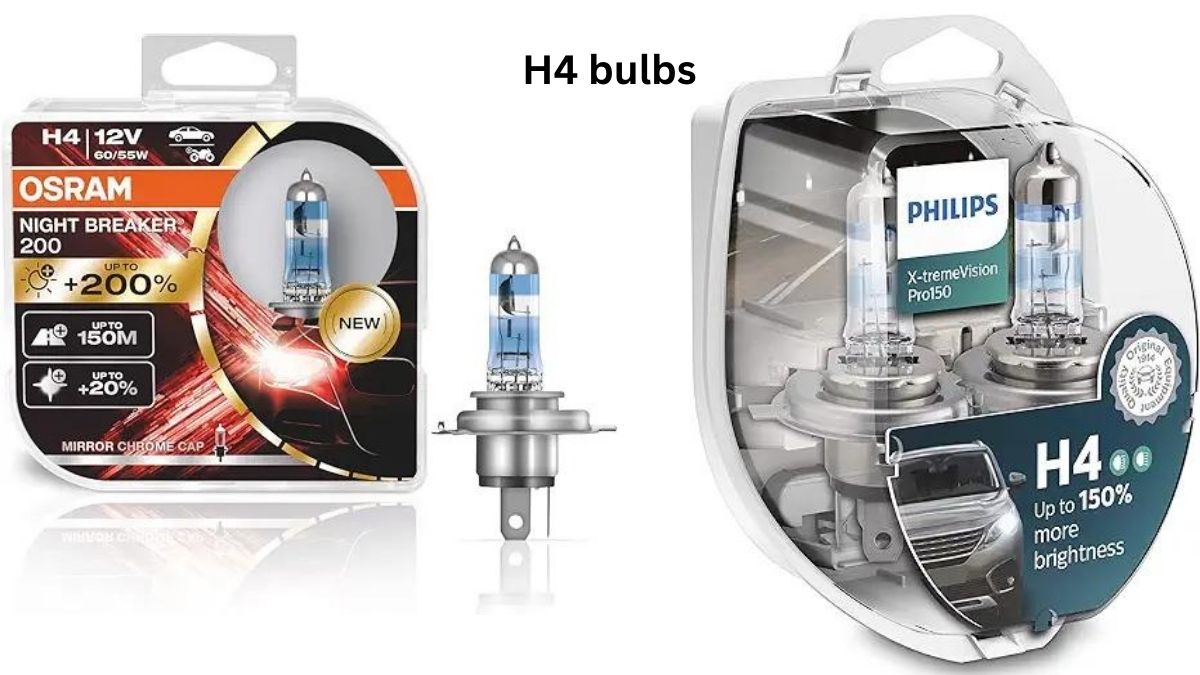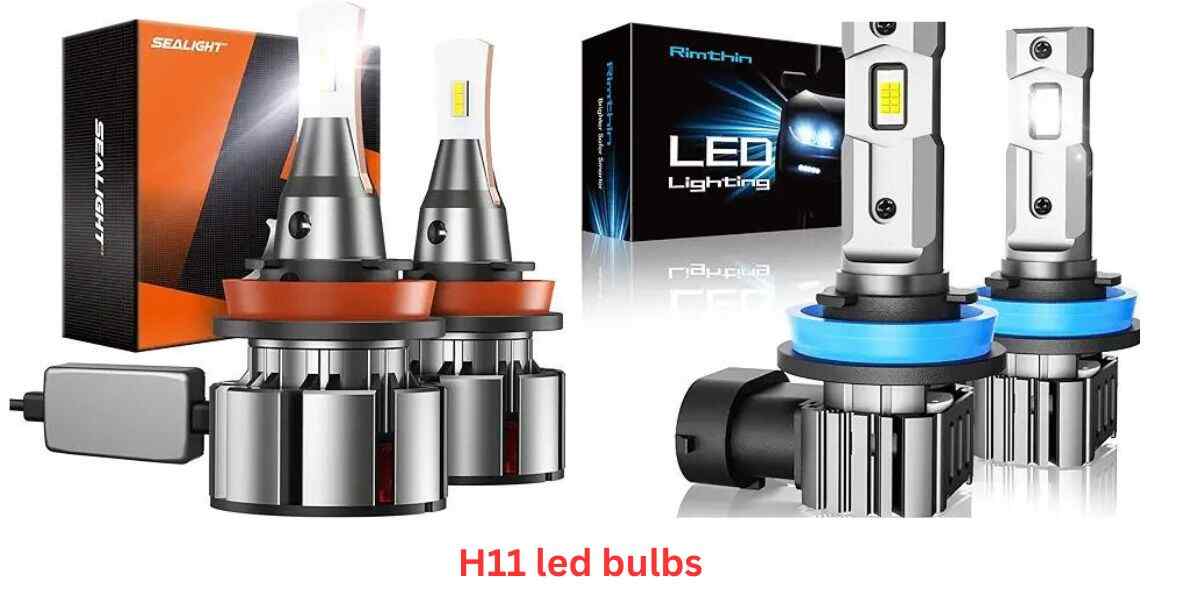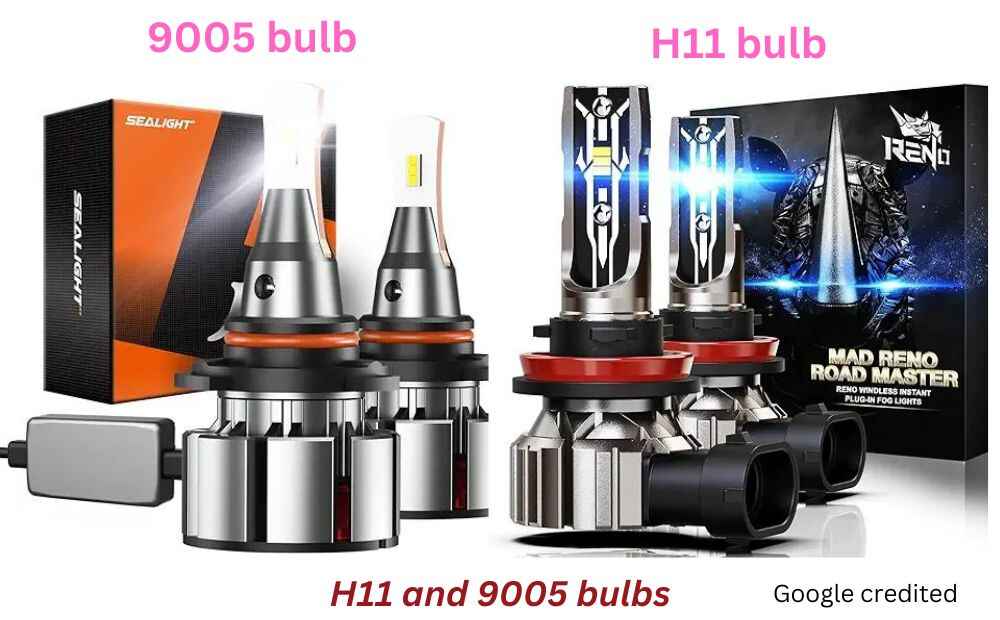Selecting the correct headlight bulb for your vehicle can feel overwhelming with all the options available, from H1, H2, H3, and H4 to H11 and H13 bulbs. Understanding the difference between these bulb types can improve both safety and performance. This article will help clarify the differences, so you can choose the best option for your needs.

1. What is H1, H2, H3, H4?
Each bulb type, including H1, H2, H3, and H4, serves a specific function. Let’s break down the unique features of each.
i). H1 Bulbs
H1 bulbs are single-beam bulbs with one filament, meaning they offer either a high beam or low beam. Typically found in fog lights, H1 bulbs provide a reliable option for cars that have separate bulbs for each beam.
ii). H2 Bulbs
Like H1, H2 bulbs are single-beam, though they feature a different base. H2 bulbs are less common today but can still be found in certain older vehicles.
iii). H3 Bulbs
The H3 bulb is also a single-beam bulb commonly used in fog and driving lights. Known for its compact design, it includes a wire for connection, setting it apart from H1 and H2 in terms of functionality. Many people wonder, “Is an H3 bulb the same as an H4 bulb?” The answer is no, as H4 has dual-beam capability.
iv). H4 Bulbs
H4 bulbs have two filaments, providing both high and low beams in a single bulb. This feature makes them versatile, commonly used in motorcycles and older vehicles.
2. Differences in Design and Function
When comparing these bulb types, such as H1 vs. H3, H4 vs. H1, or even H2 vs. H4, design and functionality differences become apparent.
i). Filament Configuration
H1, H2, and H3 bulbs have single filaments, limiting them to one beam type at a time. However, H4 bulbs stand out with dual filaments, allowing them to produce both high and low beams from one bulb.
ii). Base and Mounting
Each bulb type has a unique base, impacting compatibility. The difference between H1 and H3 bulbs, for instance, is partly due to the H1’s P14.5s base and the H3’s PK22s base. Similarly, H4 bulbs have a P43t base, which can make installation and compatibility different.
iii). Usage
While H1 and H3 bulbs are often used for fog lights, H4 bulbs excel in providing both high and low beams in motorcycles and older cars. H2 bulbs are less common, often found in select older vehicles.

3. Performance and Light Output
Exploring the differences in light output can help in choosing between H3 vs. H4, H1 vs. H3, and even H4 vs. H7.
i). Brightness
H1 bulbs generally offer high brightness, especially compared to H2 and H3, while H4 bulbs balance brightness for both beams with dual-filament technology.
ii). Beam Pattern
Single-beam H1, H2, and H3 bulbs offer a consistent pattern. H4 bulbs, however, provide both high and low beams, making them adaptable. Many people debate H3 vs. H4 or H1 vs. H4 in terms of beam flexibility, and H4 often wins due to dual functionality.
iii). Efficiency
In fog light applications, H1 and H3 bulbs tend to perform well. For versatility, H4 bulbs offer a mix of efficiency and brightness.
4. Compatibility and Installation
Compatibility is essential when choosing between options like H1 vs. H4 or determining if H11 and H13 bulbs are interchangeable.
i). Vehicle Compatibility
Not all vehicles support every bulb type. The difference between H1 and H4 headlights, for example, lies in the need for separate or dual-beam configurations. Always check your vehicle’s manual before choosing.
ii). Ease of Installation
H1, H2, and H3 bulbs typically use plug-and-play connections, while H4 bulbs, with dual filaments, might require more careful installation.
iii). Replacement
When replacing, be cautious to avoid touching the glass, as oils can shorten the bulb’s lifespan. Whether you’re swapping out H3 for H4 or trying H1 vs. H11 bulbs, following installation steps carefully ensures optimal performance.
5. Cost and Availability
Cost considerations might affect your choice, especially if you’re debating H1, H2, H3, H4, or even newer options like H7 bulbs.
i). Price Range
H1 and H3 bulbs are usually budget-friendly, while H4 bulbs may cost slightly more due to dual-beam functionality. The 3157NA bulb, also popular, has a separate range and fits various car models.
ii). Availability
H1 and H3 bulbs are readily available in most stores. H2 bulbs are less common, while H4 bulbs are popular due to widespread use.
6. Advantages and Disadvantages
Each bulb type has its own set of advantages, whether you’re interested in the H3 vs. H7 bulb debate or considering the best H3 bulb for fog lights.
- H1 Bulbs: Affordable, widely available; however, single beam only.
- H2 Bulbs: Specific to older vehicles; limited availability.
- H3 Bulbs: Compact, ideal for fog lights, but single beam only.
- H4 Bulbs: Versatile with dual beams; slightly more complex to install.
7. Choosing the Right Bulb
It’s essential to weigh your needs before deciding. If you’re torn between H1 vs. H4 headlights, H2 vs. H3, or the difference between H1 H3 H4 H7, consider what you need for performance, brightness, and compatibility.
8. Maintenance and Care
Proper maintenance of your bulbs ensures they remain effective, whether they are H1, H2, H3, or H4.
- Regular Checks: Inspect your headlights routinely, replacing bulbs like H3 and H4 as needed.
- Cleaning: Clean the headlight lenses regularly.
- Proper Installation: Ensure secure installation to avoid performance issues, whether you’re using an H1 bulb vs. an H11 or another type.
9. Conclusion: difference between h1 h2 h3, h4 bulbs
Choosing the right headlight bulb type, such as H1 vs. H2 vs. H3 vs. H4, is crucial for vehicle performance. Each type—H1, H2, H3, and H4—has unique features, and understanding these differences helps in making an informed decision. From the differences between H1 and H4 bulbs to the flexibility of H4’s dual-beam setup, knowing these distinctions is essential for safety and functionality.
By recognizing the difference between H3 and H4 bulbs and other types like H11 and H13, you’ll be well-equipped to choose the best option for your needs. Be sure to check compatibility with your vehicle, invest in high-quality bulbs, and maintain them for optimal performance.
Read also:



